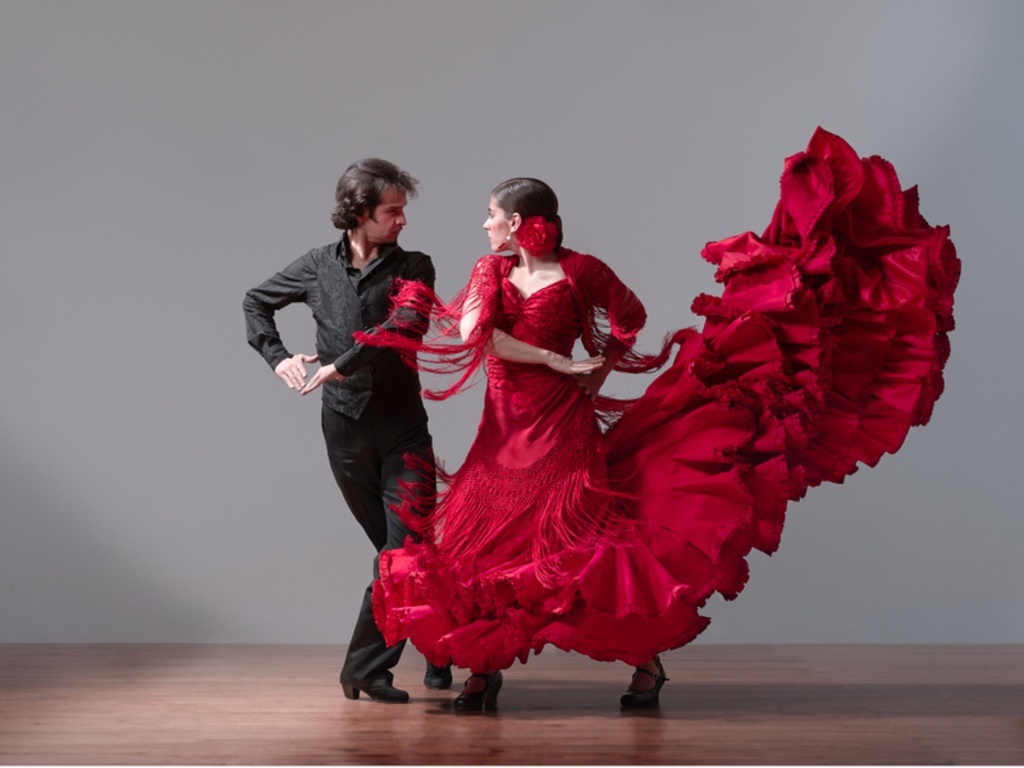Hailing from the Southern Andalusia region in Spain, Flamenco consists of three parts: one part cante (the song), baile (the dance) and guitara (playing the guitar). This passionate folk art is often improvised, and is a “rhythmic blend of song, dance and guitar”.
When many non-Spaniards think of Spanish culture, two of the most common things that so often come to mind are Flamenco and bullfighting. In fact they are often viewed as synonymous with one another and thought of as related, when in reality, this is not the case. “El Encierro” , or The Running of the Bulls (in English), takes place during the festival of “San Fermín”. Dating back to at least the 15th century, each year in Pamplona on the 7th of July at 8AM, the festival begins with a 4 minute running of the bulls, later corralling them into the bull fights with the matadors. Whereas “The Feria de Abril” (April Fair), where women dress in those signature tiered, spotted skirts (and men wear chaqués), is primarily celebrated in Seville (as a separate festival all together). The distance between Pamplona and Seville is about 600 miles, so it’s not like you can just quickly skip down the street at the same time to partake in the other activity.
With the Running of the Bulls just recently taking place, and as such, front of mind, it seemed fitting to touch on the colorful Flamenco as well. Known for its passionate stomps and repetitive clapping, the songs of Flamenco have different origins and meanings. The two main styles are “chico” and “jondo”. Chico is the lighter, more humorous tone. Whereas jondo is the more deep, serious style, labelled as the cry of the oppressed people. Flamenco consists of a series of complex, rhythmic footwork and rhythmic movements of arms and hands which create dramatic shapes with the body.
You don’t have to go all the way to Spain to catch a Flamenco show. In cities around the world, there are places where one can go to get a taste of that Spanish sabor (flavor). Even right here, just across the freeway from ATOMIC lies the Spanish restaurant “Tapas of Spain”. With it’s live Flamenco dance and music shows (on weekends), authentic Spanish cuisine and nostalgic, traditional decor, “Tapas” brings the old world charm of Spain right to your doorstep.
Whether far off abroad, or re-creating the atmosphere at a local Spanish restaurant, take a whirl through art and history, all by experiencing a taste of the fiery Flamenco.

